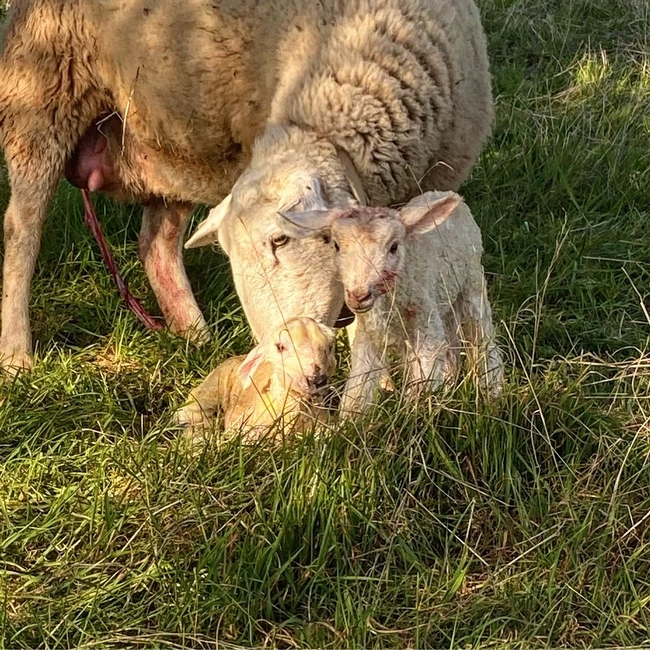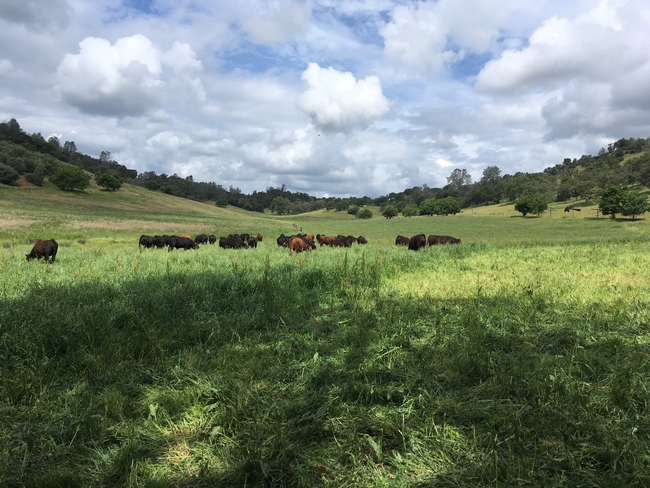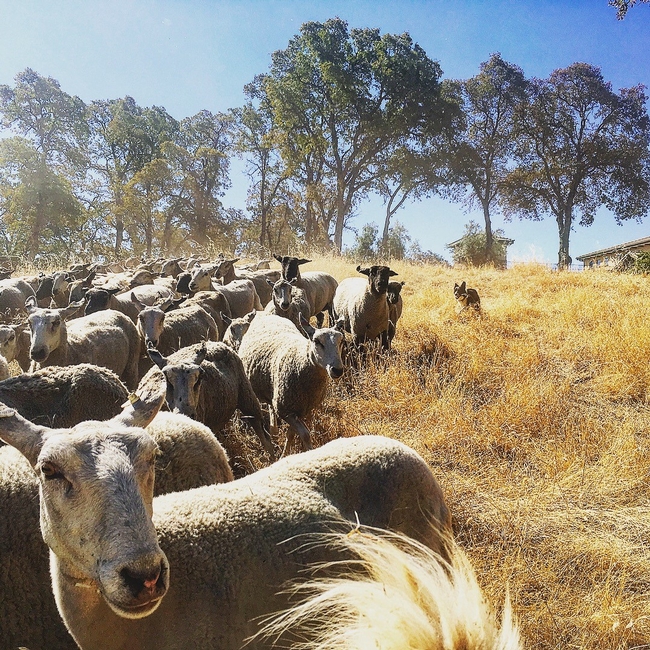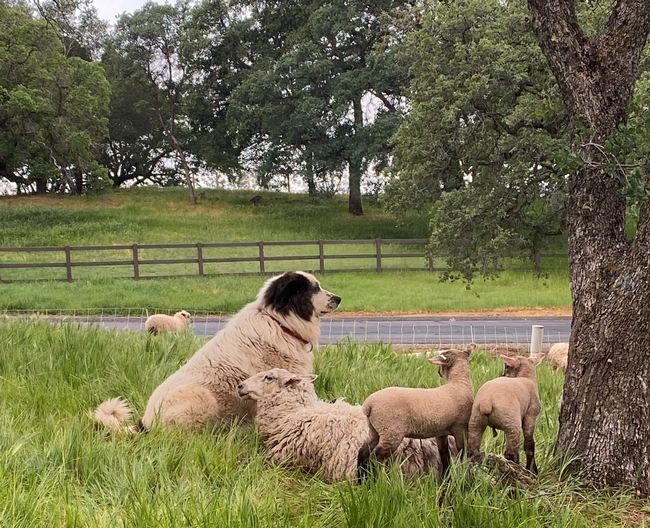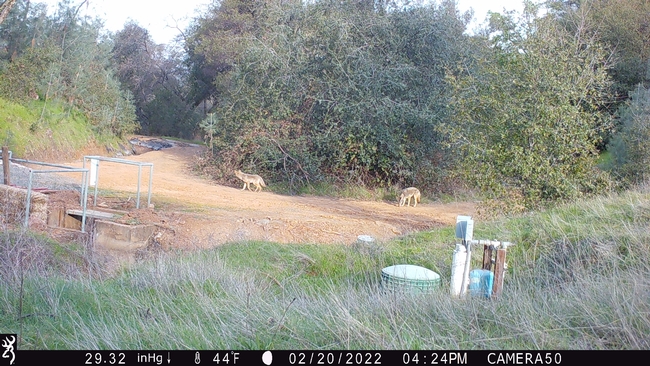- (Public Value) UCANR: Safeguarding abundant and healthy food for all Californians
- Author: Daniel K Macon
Later this month, the USDA's National Animal Health Monitoring System (NAHMS) will kick off its fourth national study of the U.S. sheep industry. This project is entirely voluntary on the part of producers, and will provide the industry with critical information about high priority animal health and management issues. I hope you'll consider participating!
According to NAHMS, the study has five primary objectives:
- Describe the occurrence of common, economically important sheep diseases, as well as management and biosecurity practices associated with those diseases;
- Describe antimicrobial (antibiotic) stewardship on sheep operations and estimate the prevalence of enteric microbes and antimicrobial resistance patterns;
- Describe producer practices regarding internal parasite control and dewormer resistance;
- Describe changes in animal health, nutrition, and management practices in the U.S. sheep industry since 1996; and
- Provide serum to include in the serologic bank for future research.
In Phase I (January-February 2024) of the study, the National Agricultural Statistics Service will contact selected producers to complete a general sheep management questionnaire. These producers will also have an opportunity to participate in additional research activities.
During Phase II (April-July 2024), a subset of these producers will be contacted by USDA's Veterinary Services to complete a more detailed questionnaire and provide biological samples, including
- Fecal Parasite Test: Fecal egg counts on a composit sample will provide information about parasite burden. Select operations will also be examined for dewormer effectiveness.
- Enteric Microbe Test: Detection and antimicrobial susceptibility testing of Salmonella, E. coli, and Campylobacter in your sheep.
- Lameness Pathogens Test: Swabs will be tested for lameness pathogens on the operation.
If your operation is selected for these tests, you'll receive individualized reports for each category (these tests would cost more than $3,000 if you had to have your own veterinarian conduct them). The results will also be used to help build our understanding about key sheep health issues. From an extension perspective, these results will help me focus future workshops and materials around the issues that matter most to commercial producers! And again, your privacy will be protected - participation is entirely voluntary, and no data will be reported in any way that could reveal the identity of a participant.
I hope you'll participate! For more information, check out the NAHMS sheep study webpage!
- Author: Dan Macon
Register now for the Sierra Foothills Cattle & Sheep Grazing School!
If you look back far enough in the histories of most foothill cattle operations, you'll find... SHEEP! Believe it or not, many long-time cattle operations also had sheep at one time. And today, there's increased interest in using multi-species grazing as a risk management and diversification tool!
If you're interested in learning more about managing both sheep and cattle on rangeland or pasture, sign up for the Sierra Foothills Cattle & Sheep Grazing School, July 14-15, 2022, in Auburn, California! This two-day school will include information - and hands-on experience - in grazing planning, estimating carrying capacity, fencing systems, stockmanship and husbandry practices, cattle and sheep nutrition, and economics! Our instructors include Dan Macon (UCCE Livestock and Natural Resources Advisor), Joe Fischer (Bruin Ranch), and Ryan Mahoney (R. Emigh Livestock). Every student will have an opportunity to graze both sheep and cattle!
Tuition for the 2-day program is $200, which includes meals and course materials. Producer scholarships are available through Sierra Harvest.
For more information, contact me at dmacon@ucanr.edu or (530) 889-7385. Let's get out there and graze!
- Author: Dan Macon
Last month, between dog food and vaccines, we spent just over $103 on our three livestock guardian dogs (LGDs). For the first part of April, our two older dogs (Bodie and Elko) were with our ewe-lamb pairs on annual rangeland west of Auburn. Our younger dog (Dillon) was protecting our rams. After we sheared the sheep over the third weekend of April, Dillon and Bodie went with the pairs to irrigated pasture; Elko stated with a handful of late lambing ewes at our home place. During that time frame, we lost a lamb to disease, another to a fencing mishap, and a third due to an assumed case of thievery (by Dillon - see "The Right Dog for the Job"). We didn't, however, lose any sheep to predators - in fact, we haven't lost any sheep where they were protected by dogs for at least half a decade. But how do we know whether our dogs are a cost-effective livestock protection tool?
Along with my colleague Carolyn Whitesell (UCCE Human-Wildlife Interactions Advisor in the Bay Area), I just published a new peer-reviewed analysis of the economics of LGDs in the Western Economics Forum (you can download the full paper here). If you're not into reading journal articles (and who is, really!?), here are our key findings:
Benefits of Using LGDs
- LGDs likely reduce the indirect, stress-induced losses associated with depredation (including reduced weight gains, lower conception rates, and increased labor).
- Ranch-raised ewes may have greater value than purchased ewes given their local adaptation to management and forage conditions.
- Sheep guarded by LGDs travel greater distances to forage in rangeland conditions, increasing grazing efficiency.
Cost Factors
- Labor costs and dog:livestock ratios vary greatly in real-world settings. Maximizing labor efficiency, and determining the proper number of dogs by operation and season can reduce costs.
- Successful bonding techniques are a key driver in LGD acquisition and development costs (and subsequent depreciation expenses).
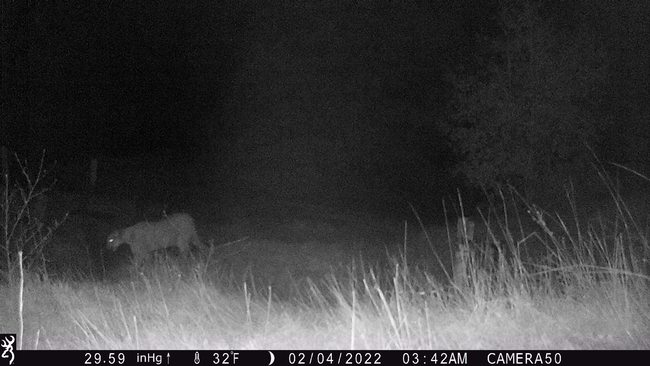
- Author: Dan Macon
With the month of May upon us, wildfire season (at least here in the Sierra foothills) is just around the corner. Indeed, May is Wildfire Awareness Month - the National Interagency Fire Center website is a great source of information on steps we can all be taking to make our communities, ranches, and homes more fire safe and fire resilient.
If you operate a ranch in Nevada, Placer, or Yuba County, one of the first steps you should consider taking is registering for this year's Disaster Livestock Access Program. Developed last year by a steering committee comprised of local ranchers, agricultural commissioners, and UC Cooperative Extension, the Disaster Livestock Access Program is designed to coordinate with emergency managers to provide ranchers with access to livestock in evacuation zones for the purpose of feeding, watering, and caring for commercial livestock.
Our program is unique in that our geographic coordination mirrors that of our local CALFIRE unit (which reflects the on-the-ground reality that many commercial ranches operate in multiple counties). Each county will recognize a pass issued by any of these three counties (Nevada, Placer, and Yuba).
Who qualifies for a Disaster Livestock Access Pass?
For the purposes of this program, a commercial livestock operator is defined as owning or managing 50+ head of livestock (including in utero, e.g., 25 bred cows), 100+ poultry or rabbits, or 50+ beehives that reside in Placer, Nevada, or Yuba County for at least a portion of the year. Cattle, sheep, goats, hogs, poultry, rabbits, llamas, alpacas, and bees that are "commercially raised" (e.g., as part of a business) qualify for the program. The program applies to both private land (owned or leased) as well as to public land (including US Forest Service and BLM grazing allotments).
Will a Disaster Livestock Access Pass get me through a road block?
Not necessarily. Your local agricultural department and I will work with incident command to identify areas within evacuation zones that are safe for passholders to access. Refer to the incident flowchart below for more details.
How do I get a Disaster Livestock Access Pass?
To enroll in the program, you must provide contact information, APNs, physical addresses, and/or allotment names of grazing sites, general season(s) of use, livestock description and inventory, and release of liability. You can register online at the N-P-Y Disaster Livestock Access Registration Site or by contacting me directly at dmacon@ucanr.edu or (530) 889-7385. Ranchers will need to apply each year; even if you received a pass in 2021, you'll need to complete this registration process again this year.
Is training required?
If you haven't held a pass previously, you'll need to participate in a 4-hour training session on Saturday, June 4, 2022, from 9am to 1pm at the UC Sierra Foothill Research and Extension Center in Browns Valley, CA. This training will provide an overview of the program, information on the incident command system and wildfire behavior, and an opportunity to ask questions with local law enforcement, emergency services, and CALFIRE. If you held a pass last year, you'll need to participate in a 1-hour virtual refresher course currently in development.
Preparation is Key!
Three days before our first 2021 training session, the River Fire tore through parts of Placer and Nevada Counties. Several of the ranchers who came to the workshop were able to describe the chaos and confusion of the early hours of the fire - as well as the need to coordinate with law enforcement and fire officials on the fly. Hopefully this program will improve our ability to communicate during an emergency - and provide access to care for livestock.
If you have questions, please contact me at dmacon@ucanr.edu or (530) 889-7385.
- Author: Dan Macon
Like many people in the rural areas of the Sierra foothills, my family raises chickens. Our dozen or so laying hens keep us supplied with eggs year-round. And each year, we raise 20-30 Cornish-cross meat chickens, which we butcher ourselves - roast chicken and barbecued chicken are two of our favorite meals!
About 10 days ago, we picked up our first 15 meat birds of the year from a feed store here in Auburn. While we typically expect to lose one or two chicks at this stage, this morning we lost the 13th chick out of the 15 we started with - so we decided to try to learn what's going on. I'd recently read about an avian influenza outbreak in the Midwest and felt that we needed to be responsible chicken owners!
I first called the Sick Bird Hotline at the California Department of Food and Agriculture (CDFA) (866/922-2473) and left a message (they called back within an hour). Then I contacted the California Animal Health and Food Safety (CAHFS) Lab at the UC Davis School of Veterinary Medicine. From there, I was referred to CDFA's Animal Health Branch Redding District office, where I talked to Dr. Michael Poulos. He told me that backyard chicken producers could get up to two birds examined at the CAHFS lab for just $25 - and that we could overnight the specimen to the lab (as a sheep producer, I have driven animals to the lab in Davis for necropsy - it was nice to know I could put the dead chick on ice and overnight it to Davis - especially with gasoline at over $5 per gallon!)
The lab should have my sample by tomorrow morning. Overnight shipping was around $47 - less than the gas I would have burned driving to Davis and back. And I hope to have some answers by the end of the week. I don't suspect avian influenza, but I do hope to learn what's going on! Stay tuned!
In the meantime, here are some great resources for backyard poultry producers:
UCD Veterinary Medicine Backyard Poultry Website
California Animal Heath & Food Safety Lab System
A final note on the CAHFS lab - we send sheep to the lab whenever we experience an unusual death (for example, if more than two sheep die, or if we experience an unusual level of abortion or newborn lamb losses). We don't always get definitive answers, but we do get useful information. Thanks to information we've received from the lab, we've adjusted our mineral supplementation program to be sure that we are providing adequate selenium - and we always have injectible selenium on hand at lambing. We've also started paying more attention to sources of copper (including irrigation and drinking water in our environment). Having a necropsy performed is an investment in improving our management!


